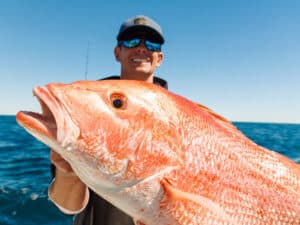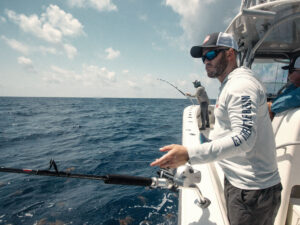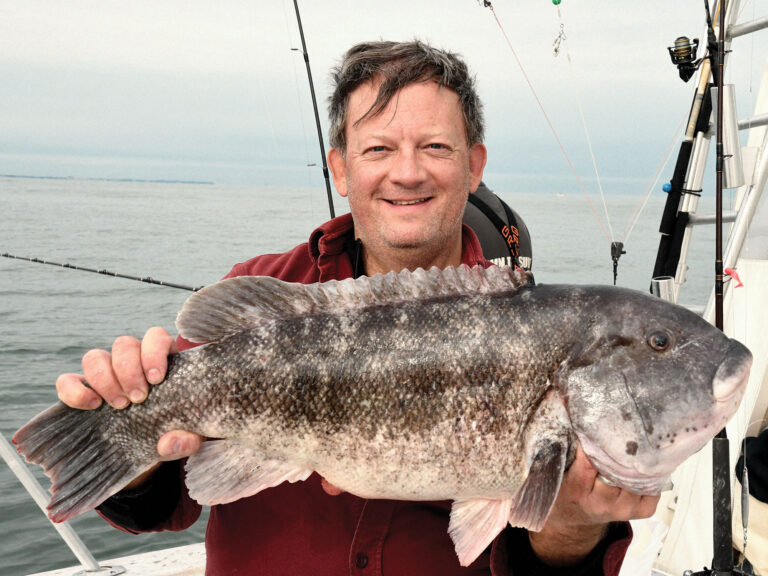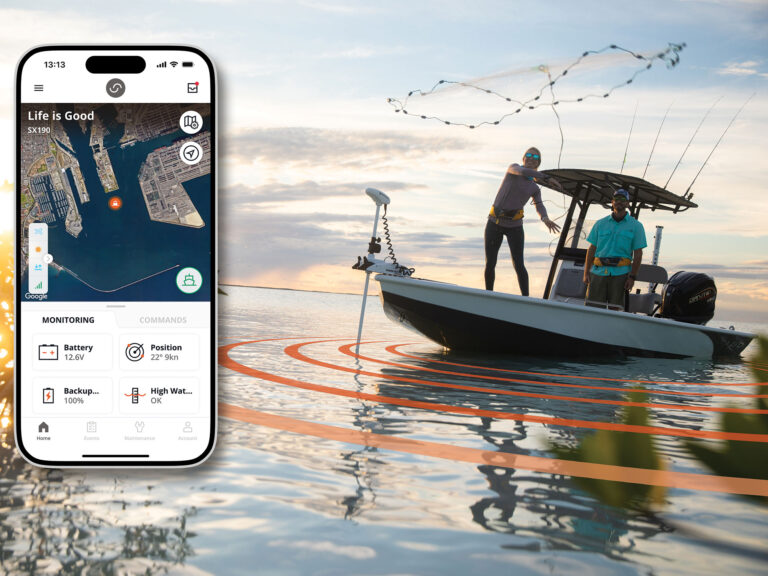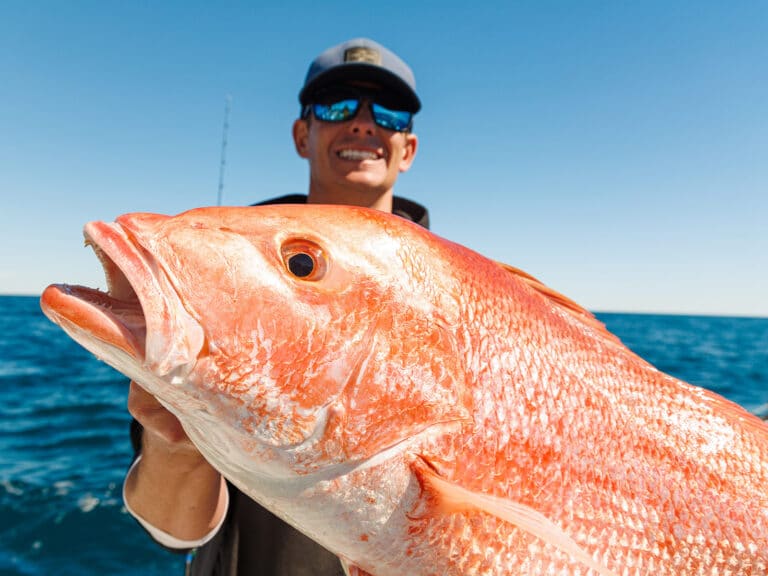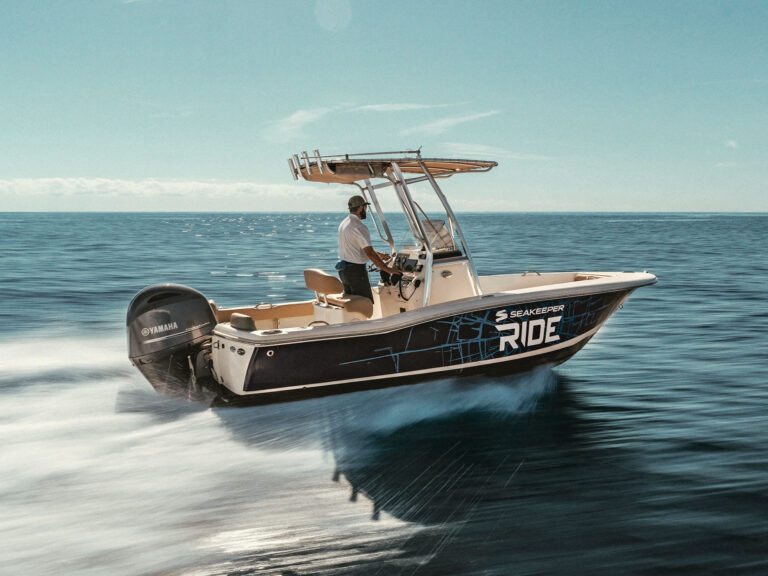The trolling motor was invented in 1934, but the first saltwater models didn’t hit the water until a decade ago. Why did it take almost 90 years for the trolling motor to reach coastal anglers? Durability. Combining saltwater, metal and electricity is a recipe for corrosion-forming electrolysis. Freshwater trolling motors died in salt and early saltwater models struggled to survive.
The latest generation of saltwater trolling motors feature durable components and smart design to thrive in the harsh marine environment. Leading the way, Garmin’s Force Kraken trolling motor is built with tough components and advanced features for the ultimate in boat control to catch more fish.
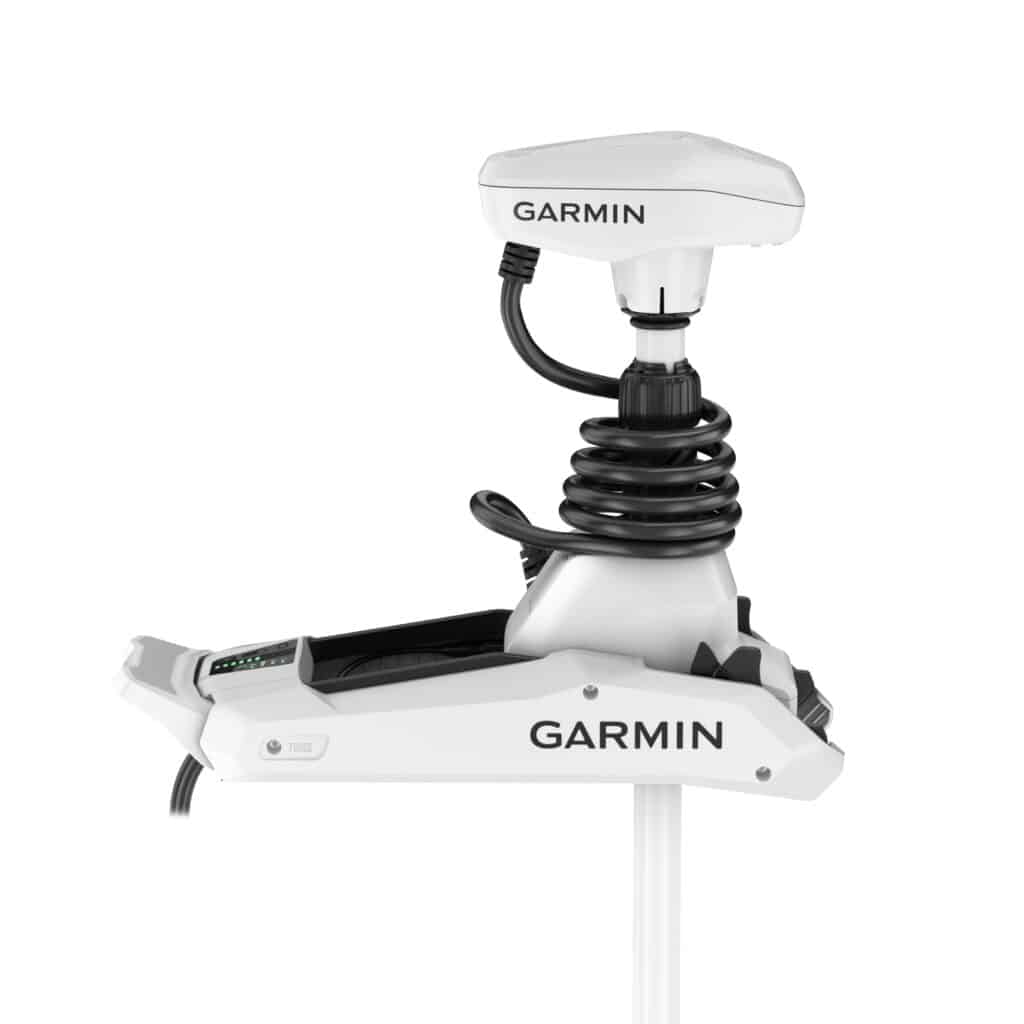
What Is a Trolling Motor for Saltwater Fishing?
The first trolling motors were small electric kickers that attached to the stern of a jon boat. Bass anglers quickly realized the advantage of mounting an electric motor on the bow to silently maneuver the boat while fishing. Before long, a trolling motor was standard equipment on a bass sled. But the technology has been slow to reach saltwater.
A trolling motor is a small electric motor on a long shaft powered by large, rechargeable batteries. The shaft is mounted on the boat to hold the motor below the water. Using a hand control, remote control or foot pedal, I direct the motor to position the boat with more accuracy than possible with a gas outboard. With a trolling motor, I can silently troll for skittish fish, sneak into shallow water, patrol an area, maneuver handsfree and hold my boat in one position while I fish.
Trolling Motor Innovations
Modern trolling motors have some amazing features. The most significant advancement is connecting the trolling motor to a GPS network. With the satellite location information, I can program my trolling motor to follow a course, repeat a course, return to a location, jog at a low speed, and more. When I push the anchor lock button, the GPS manipulates the trolling motor so my boat stays in one position.
Manufacturers have focused on durability and power improvements to bring the technology to saltwater anglers. To survive salt and sand that plagues coastal fishing equipment, saltwater trolling motors like Garmin’s Force Kraken use corrosion-resistant materials, redundant systems, and sealed electronics.
The next challenge was generating power to pull a large saltwater fishing boat in strong current and wind. To produce enough torque to move heavy boats, the best saltwater trolling motors use brushless motors that draw less electricity and create more power. Garmin’s Force Kraken can produce up to 100 foot pounds of thrust with a shaft length up to 90 inches to run boats up to 35 feet long.
With the invention of forward-facing and 360 sonar, the trolling motor has become a convenient place to mount the sonar transducer. Attaching the transducer to the motor head, I can turn the transducer to direct the signal at potential targets while watching the return on a multi-function display.
Speaking of the fish finder display, Garmin’s Force Kraken trolling motor uses wireless connection to integrate with Garmin’s electronics systems. I control the Kraken with a handheld remote control, wireless foot pedal, smartphone or smartwatch. Combining these user-friendly features with a durable electric motor large and powerful enough to fish offshore and inshore, Garmin’s Force Kraken is a perfect example of the capabilities of modern saltwater trolling motors.
8 Top Saltwater Fishing Electric Trolling Motor Features
Adding GPS control and forward-facing sonar completely changed the trolling motor game. The small electric motors are now a boat control and fish-finding weapon. With the Garmin Force Kraken and other modern trolling motors, I program routes, hold my boat in one place, search fish in every direction and fish all day without worrying about battery power. Today’s trolling motors have a long list of features aimed at making fishing easier and more fun.
Anchor Deployment Capabilities
Without a doubt, the Garmin Force Kraken’s virtual anchor is its most valuable feature. I push a button on the remote and the trolling motor works to hold the boat in place. Garmin’s Force Kraken uses a two band GPS for pinpoint accuracy and lightning fast steering response.
Most trolling motors spin the motor 360 degrees to move the boat forward and backward. Instead of turning the whole motor, The Force Kraken uses a reverse gear which creates less turbulence and responds quicker saving time and energy. In swift current and strong wind, the Force Kraken controls my boat without missing a beat.
Garmin LiveScope Compatibility
In addition to advanced boat control capabilities, Garmin’s Force Kraken and other top-end trolling motors offer me a place to mount my forward facing sonar transducer. Forward-facing and 360 sonar allow me to see fish and structure in every direction below the water. The transducer turns 360 degrees to search for fish and structure up to 200 feet from the boat.
Some anglers mount the transducer to the end of a pole that is attached to a bracket on the side of the boat. Garmin’s Force Kraken allows me to mount the LiveScope transducer on the motor. To direct the sonar signal, I turn the trolling motor in the direction I’m searching. I route the transducer cable through the trolling motor shaft for a clean install and less chance of damaging the cord.
Battery Performance
Battery performance is a trolling motor’s Achilles heel. The electric motor runs on large batteries with limited capacity. Sealed lead-acid marine batteries are the standard; lithium batteries are lighter and more durable with longer battery life.
To extend the battery life, Garmin’s Force Kraken’s brushless motor conserves energy and produces more power than a brushed motor. Also, the efficient propeller and reverse gear reduce the motor’s work load. Running off 36 volts (that’s three 12 volt batteries), the Kraken will produce 100 pounds of thrust for hours of fishing.
User-Friendly Remote and Foot Pedal Control
A trolling motor is all about boat control, so controlling the motor is key to catching more fish. Garmin’s Force Kraken offers a floating, wireless remote control, a wireless foot pedal or integration with a smartphone or smartwatch. I can even operate the motor with my fish finder display.
The best trolling motor remotes have large, intuitive buttons and a small LED display of motor information. To operate the motor while I’m casting my fishing rod, a wireless foot pedal promotes hands-free fishing.
If the wireless systems fail, I can still control the motor with my phone. A few basic features, like anchor lock, are accessible on the base of the motor. When I’m searching for fish, I use the foot-pedal to cast and retrieve while covering water.
The handheld remote gives me quick access to anchor lock and other programming features. To unlock the motor’s full potential, I use the app and wireless connection to my fish finder to program routes and make precise location adjustments.
Turbo Mode
When the current is ripping and the wind is whipping, a trolling motor struggles to control a big boat. Garmin Force Kraken has a Turbo Mode that increases the power and torque for short periods when I need it most. Kicking the motor into Turbo Mode helps me limit power usage by saving maximum speed for the toughest motoring conditions.
Minimal Prop Wash and Obstruction Quick Reverse
A trolling motor quietly maneuvers the boat while I’m fishing. To prevent spooking the fish, Garmin’s Force Kraken combines an optimized propeller and silent operation. The propeller creates minimal bubbles and no cavitation and the shaft turns smoothly. When the boat is in anchor lock mode, the propeller spins forward and reverse instead of the shaft constantly spinning to keep the boat in one place.
Pivot Style Mount
Most saltwater boats don’t have a wide open deck in the bow like a bass boat. Garmin’s Force Kraken uses a small pivot style mount to secure the motor with a minimal footprint.
When I arrive to the fishing grounds, I rotate the shaft to unlock the release and then slide and pivot the motor head into the water. The pivot mount is easy to remove from the boat and requires less space in the bow, so it fits more saltwater boats.
Composite Shaft
A long shaft on a large saltwater boat takes a lot of abuse. In rough seas, the powerful motor wants to bend and break the shaft. Saltwater trolling motors have an indestructible and corrosion resistant composite shaft. The best saltwater trolling motors, like Garmin’s Force Kraken, have a shaft that includes a conduit to route a fish finder transducer cable.
The final choice is choosing the shaft length. The trolling motor’s composite shaft reaches from the bow to below the water. Measure the distance and choose a shaft length that will keep the motor below the water in rough seas. An easy-to-use online tutorial makes it easy to build a total boat system.
Garmin’s Force Kraken is available in four sizes, from 48 inches to 90 inches, to cover boats from 18 feet to 35 feet long. The price at Bass Pro Shops depends on the shaft length, with a 48-inch model going for $3799.99 to $4299.99 for the 90-inch motor.
Alternatives to the Garmin Force Kraken
It’s a good time to be in the market for a trolling motor. The most advanced technology is now available for saltwater trolling motors with up to 115-pounds of thrust and a 100-inch shaft. And the latest motors are finally winning the battle against corrosion with space-age materials and design. The race is on to create the most advanced trolling motor that is easiest to use. All this is great news for saltwater anglers looking to add a trolling motor to their boat.
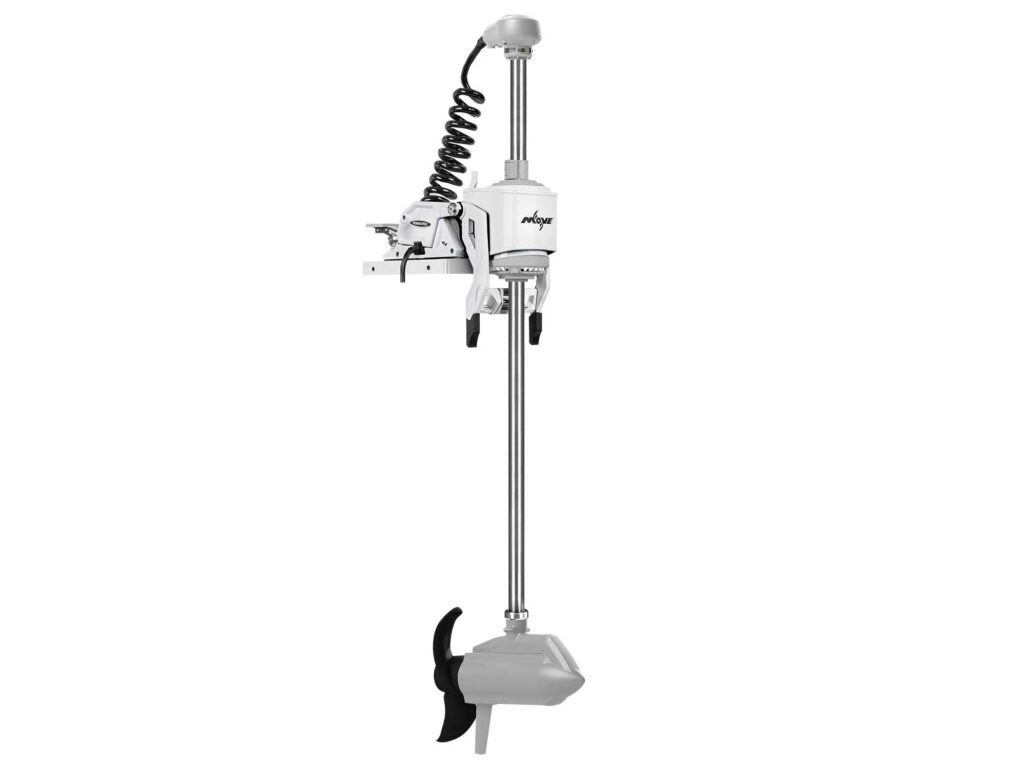
Heavy Duty: Power-Pole Move PV
Power-Pole’s primary objective when they designed their first trolling motor was durability. They satisfied that objective with a bulletproof brushless motor, reinforced propeller, titanium shaft and redundant systems.
The Move PV is part of Power-Pole’s total boat control system to link with their shallow-water anchors to stop and propel the boat with one remote. Of course, the Move includes all the advanced GPS features expected of a top-of-the-line trolling motor.
Price: $5599.99 – 72”
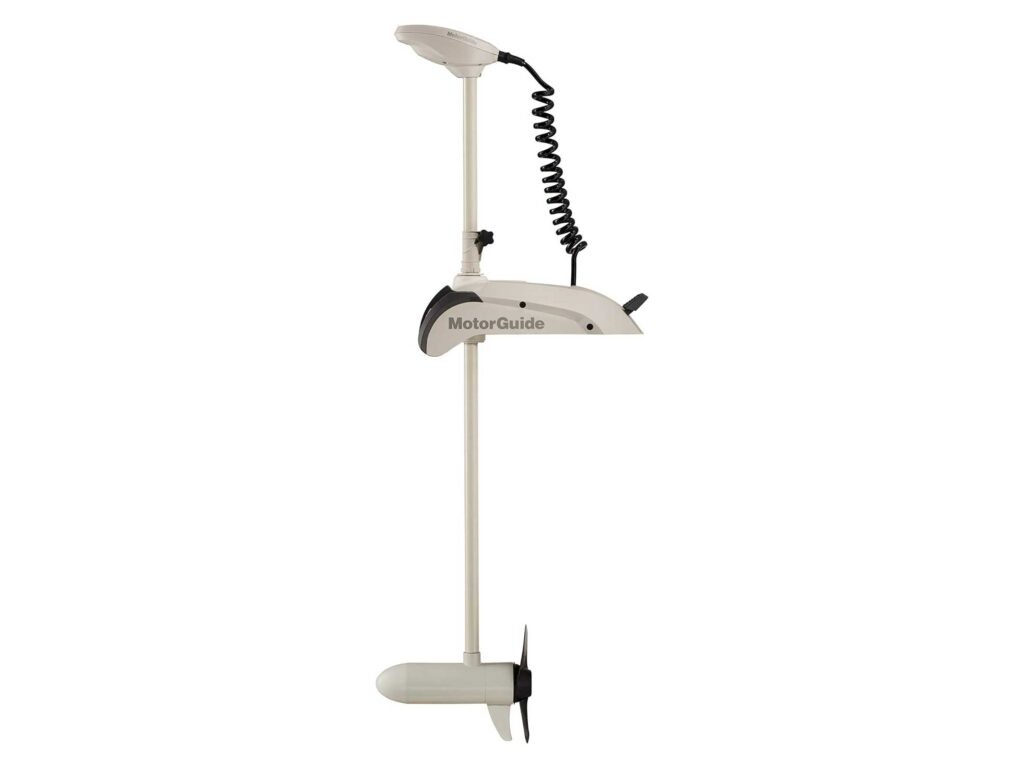
Budget Friendly: MotorGuide Xi5
MotorGuide’s Xi5 is a classic saltwater trolling motor that provides advanced features at a great value. I control the Xi5 with a handheld remote or wireless foot pedal. The trolling motor integrates with Lowrance, Simrad and Mercury Marine electronics. A pin-point accurate GPS allows me to jog the boat, follow a course and lock the boat in position. The Xi5 has been around for years, a testament to its durable composite shaft, sealed electronics and corrosion-resistant coatings.
Price: $2549.99 – 72”
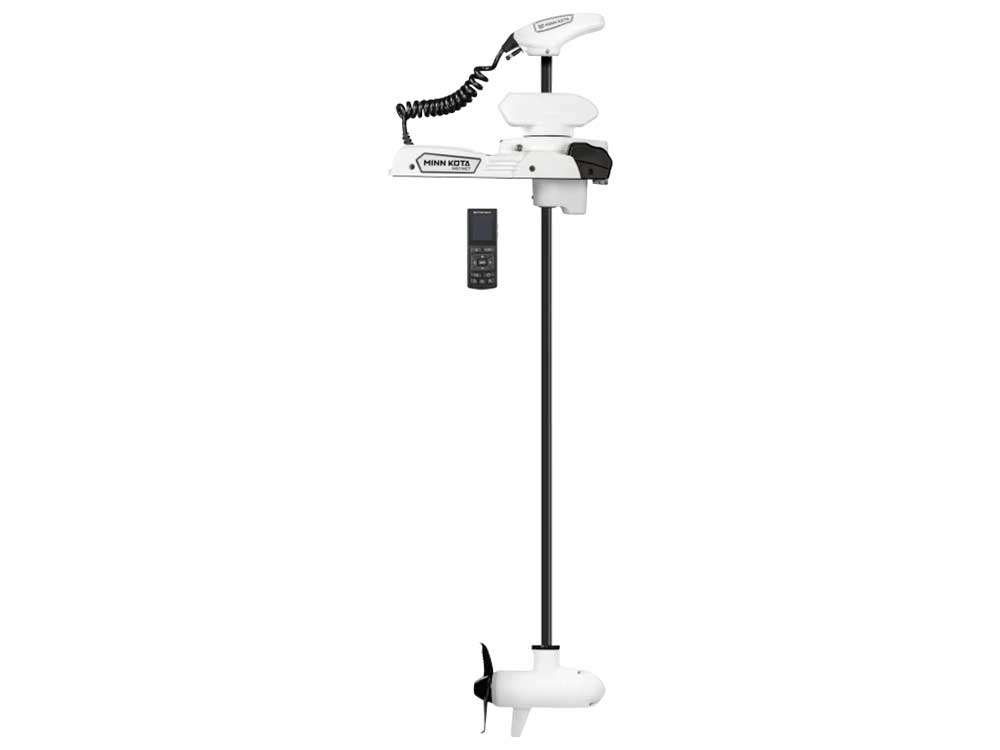
Big Boats: Minn Kota Riptide Instinct Quest
Minn Kota started the trolling motor game and stays ahead of the competition with the largest and most powerful trolling motors. With shafts up to 100 inches and 115 foot-pounds of thrust, the Riptide Instinct Quest motor is appropriate for boats over 35 feet long. Minn Kota’s Riptide Instinct Quest includes a brushless motor, GPS control, electronics integration and power-saving features expected in a premium trolling motor for saltwater.
Price: $4699.99 – 72”
Elevate Your Fishing With Advanced Trolling Motor Features
Trolling motors for saltwater are more powerful and durable than ever before. I use my trolling motor to troll, power drift, fish structure and silently search for fish. Trolling motors may be new to saltwater fishing, but the advanced boat-control features make me wonder how I ever lived without a trolling motor on my saltwater boat.
FAQ
What is the difference between a trolling motor and an outboard motor?
A trolling motor is a small electric motor used to maneuver the boat while fishing. A gas-powered outboard quickly propels the boat to and from the fishing grounds. The trolling motor is less powerful and slower, but the motor spins 360 degrees so I can turn the boat quickly and accurately without the noise and commotion of a gas engine. I use my gas motor to travel to my fishing spot, then I turn off the outboard and drop the trolling motor into the water. With the small electric motor, I precisely position the boat to cast or jig more accurately.
How do I know what size trolling motor I need?
Each trolling motor manufacturer has online tutorials and guides for choosing and fitting a trolling motor to any boat. The rule of thumb is a longer and heavier boat requires more thrust and a longer shaft.
How fast can a troll motor go?
A trolling motor isn’t designed for speed. However, a trolling motor must have enough power and torque to control the boat in adverse weather and water conditions. Garmin’s Force Kraken has a special Turbo Mode that boosts power when the going gets rough. It also uses a silent and responsive steering unit and a unique reverse gear to improve boat control and save battery power.

